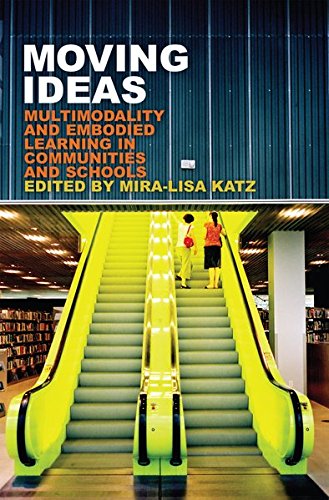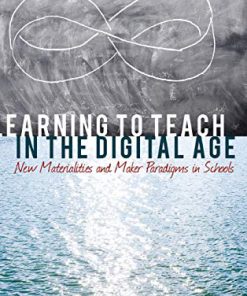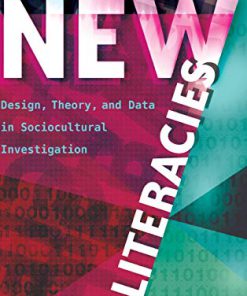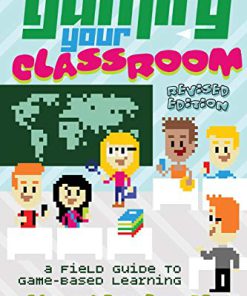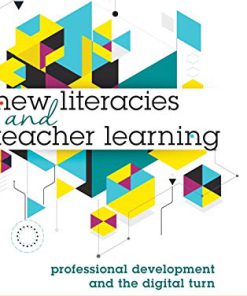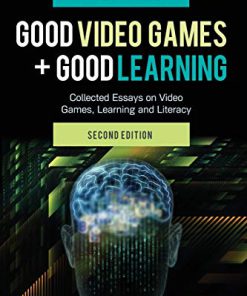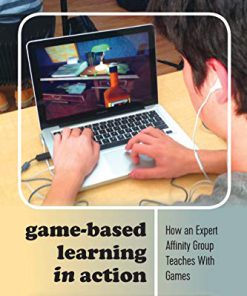Moving Ideas Multimodality and Embodied Learning in Communities and Schools New Literacies and Digital Epistemologies 1st editon by Katz, Mira Lisa 145419975X 9781454199755
$50.00 Original price was: $50.00.$25.00Current price is: $25.00.
Moving Ideas Multimodality and Embodied Learning in Communities and Schools New Literacies and Digital Epistemologies 1st editon by Katz, Mira Lisa – Ebook PDF Instant Download/Delivery: 145419975X, 9781454199755
Full download Moving Ideas Multimodality and Embodied Learning in Communities and Schools New Literacies and Digital Epistemologies 1st editon after payment
Product details:
ISBN 10: 145419975X
ISBN 13: 9781454199755
Author: Katz, Mira-Lisa
What does it look and feel like to communicate, create, compose, comprehend, teach, and learn with our bodies? Reaching beyond existing scholarship on multimodality and literacies, Moving Ideas expands our capacity to understand the embodied dimensions of learning and stretches our repertoires for more artfully describing them. Wresting language away from its historically privileged place at the center of social science research and practice, this collection examines the strategic layering across semiotic modes, challenging educators and researchers to revisit many of our most elemental assumptions about communication, learning, and development. The corporeal pedagogies these authors describe illuminate a powerful kind of learning that we know far too little about; in this age of accountability and high-stakes testing, failing to pay adequate attention to the promise of multimodality means forfeiting significant resources that could be used to innovatively engage people of all ages in education broadly conceived
Moving Ideas Multimodality and Embodied Learning in Communities and Schools New Literacies and Digital Epistemologies 1st Table of contents:
Foreword: Ideas Do Move
Poem: “The Body Is the Text”
Introduction
The Primacy of Movemen
Insights from Multimodal Research and Practice
Embodied Literacies, Corporeal Pedagogies
Bodily Learning and Knowing: Struggle and Possibility
Feeling and Thought: Emotion and Reason
Embodied Thinking: Neuroscientific Understandings of Emotion and Reason
Reframing the Debate
At Our Fingertips: The Role of Gesture in Teaching and Learning
Chapter Summaries
Resomaticizing Learning
Notes
Works Cited
1. Growth in Motion: Supporting Young Women’s Embodied Identity and Cognitive Development Through Dance After School
Cognitive and Attitudinal Benefits of Arts After School
Embodied Cognition and Multimodal Learning
Self and Identity
Studying Dance as an Educational Context
Methods
Context
How Dance Shapes Lives
Developing a Sense of Control
Taking the Long View of Their Own Development
A Supportive, Communal Learning Environment
Multimodal Teaching and Learning
Taking Chances
Multiple Modes, Trust, and Education
Notes
Works Cited
2. Chroma Harmonia: Multimodal Pedagogy Through Universal Design for Learning
Introduction
The Context and The Need for Universal Design for Learning
Heart-To-Hearts and Hands-On Grammar
Conclusion: Toward an Embodied Grammar
Notes
Works Cited
3. “All the World’s a Stage”: Musings on Teaching Dance to People With Parkinson’s
A Dance Class Grows in Brooklyn
The Importance of Place
Swans on a Red Carpet
Aesthetics, Choreography, and The Realm of the Possible
The Empowering Gaze
A Community of Learners
Notes
Works Cited
4. The Communicative Body in Women’s Self-Defense Courses
Introduction
Embodiment and Gender in Interaction
Matching Words and Body Consciously: Constructing Coherent Stances
Intonation Within a Multimodal Stance
Integrating Awareness and Action In The Role-Plays
Constructing Coherent Stances of Compliance
Conflicts Across Modalities: Noticing Interactional ‘Dissonance’ in Others
When It’s Someone You Know: Recognizing Multimodal Dissonance in Familiars
Conclusion
Appendix: Transcription Conventions
Note
Acknowledgments
Works Cited
5. Pasture Pedagogy: Field and Classroom Reflections on Embodied Teaching
Cross-Talk in the Classroom
The Nature of the Horse: Deepening an Awareness of Body Language
Reading Body Language as Part of a “Listening Stance”
The Farm: Working With Feral Horses
Gentling Yearlings: a Listening Approach to Halter Breaking
Reading to Reassess: Creating Comfortable Environments for Curiosity and Choice
Reading Fear: When “Misbehaving” Makes Sense
The Apprentice Program: Diana’s First Day
Longe Lesson: Consciously Reading and Enacting Body Language
Eye to Eye: Observing Diana’s Growth
Resonances in Reading Across Contexts
The Significance of Space in the Classroom
Embodying Language in Learning
Organizing Dynamics in Learning
Into the Composition Classroom & Considering Texts
“Boring” Texts: Following Angelica’s Lead
Reading With and Against the Grain, of Students, Horses, and Text
Reading to Connect
Holistic Teaching: Reading in Riding, Reading and Writing
Notes
Works Cited
6. 36 Jewish Gestures
Gesture as a Form of Identity: Jewish in the Mirror
Matching Meaning and Movement
Gesture as World View: 36 Jewish Gestures
Jewish Gesture On the Silver Screen
Performing Identity: Gesture and Place
Audiences Respond
Gesture as Teaching and Learning Tool: Modeling Movement
Conclusion: Gesture, Teaching, and Power
Notes
Works Cited
7. Thinking with Your Skin: Paradoxical Ideas in Physical Theater
Works Cited
8. Visceral Literature: Multimodal Theater Activities for Middle and High School English Language Arts
Food is Love: Story is Nourishment
The Power of Live Performance
Integrating Awareness Through Listening and Play
Personal Transformation in the Student
Transforming Literature
Fostering Theater in Secondary and Post-Secondary Classrooms
Making Literature Accessible to the Specific Needs of the Group
Safety and Risk-Taking in the Classroom
Notes
Works Cited
9. A Trio: Combining Language, Literacy and Movement in Preschool and Kindergarten Community-Based Dance Classes
Introduction
My Personal History and Dance Education Background
A Sample Lesson Plan
21 Weeks and Five Big Ideas
First Idea: Naming Movement
A Complete Circle: Improvising, Capturing in Words, “Saying Back” to Students, and Dancing Again
Second Idea: Using Verbal Prompts to Inspire Movement
Third Idea: Using Written Language as a Springboard For Dance
Lists of Words
Books
Fourth Idea: Using Names to Acknowledge Each Dancer
Fifth Idea: Rhythm And Play With Nursery (And Other) Rhymes
Inviting Parents to Class: the Final Sharing in Week 21
Conclusion: Pairing Literacy and Movement in Dance Classes
Appendix A: Organizations Referenced
Notes
Works Cited
10. The Paramparic Body: Gestural Transmission in Indian Music
Teaching Lineages
Processes of Gestural Transmission
Inheritance and Volition
The Paramparic Body
Ethical Practice and the Paramparic Body
Notes
Works Cited
11. Literacies of Touch: Massage Therapy and the Body Composed
Body Writing
Point of Contact
Mapping the Body
Engaging Bodies
A Subtle Connection
The Pedagogy of Touch
Conclusion
Notes
Works Cited
12. The Embodiment of Real and Digital Signs: From the Sociocultural to the Intersemiotic
Human Bodies as Spatially Situated Signs in Real Activity
Digital Images as Spatially Situated Signs and the Neural Correlates of Action Observation
Implications for the Intersemiotic Analysis of New Media Literacies
Works Cited
Conributors
People also search for Moving Ideas Multimodality and Embodied Learning in Communities and Schools New Literacies and Digital Epistemologies 1st :
multimodal learning examples
multimodal examples in education
moving bodies learning minds
examples of embodied learning
Tags:
Katz,Mira Lisa,Moving Ideas Multimodality
You may also like…
Uncategorized
Learning to Teach in the Digital Age New Materialities and Maker Paradigms in Schools Sean Justice
Education Studies & Teaching - Educational Guidance & Counseling
Antiracist Counseling in Schools and Communities 1st Edition Holcomb-Mccoy
Uncategorized
Good Video Games and Good Learning 2nd Edition by James Paul Gee ISBN 9781433123931 1433123932
Computers & Technology

